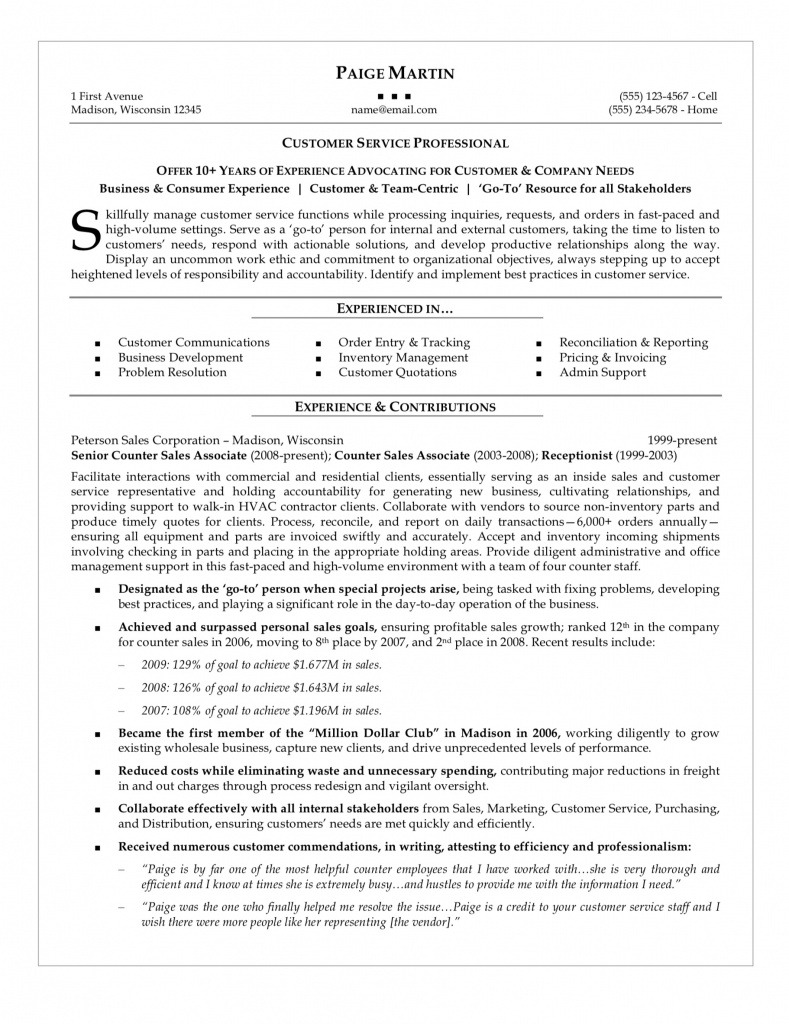Dear Sam: I have more than 25 years of experience in various customer service capacities. I have just been informed that I will be laid off from my present position in a few months. I’d very much like to return to the customer service environment, but I don’t want to give away my age (I’m over 50, but I don’t look like it – LOL!) and I feel the format of my present resume will bore a hiring manager to death! Could you look at my resume and provide some feedback? – S.H.
Dear S.H.: I am so sorry to hear about your impending layoff, let me try to help. Allow me to paint a picture of your resume for readers. You open with Qualifications, mostly a brief overview of your administrative, technical, and soft skills. You move onto Education, which contains your high school diploma (should never be on a resume unless the candidate is entry-level) and two college experiences without any listing of what was completed. Employment follows with each position being described by a paragraph. Your Employment section spills to page two, with some additional positions presented without descriptions. Your resume ends with a listing of training programs.
I am glad you recognize that your current presentation of your career is not optimal. And yes indeed, as you suspected, I too feel, in its current format, that your resume will be met with boredom, as it does nothing—neither through formatting nor content—to engage the reader. Let me point out the areas in which you need to revise your resume.
No dates paint a poor picture – This is probably one of the worst things you can do to your resume. Not presenting dates does not avoid aging your candidacy; in fact, it perhaps paints a much worse picture than does reality. You must show dates—years only, no need for months—on your resume for a hiring manager to understand the chronology of your career. Most hiring managers want to see about 10 years of professional history, so consider dating positions back through that timeframe and then perhaps bylining earlier roles without dates.
No prioritization of content – Your resume reads like a biography. Each paragraph contains brief fragmented statements on select aspects of your role with no prioritization of what was most important. When a hiring manager screens your resume, he/she is looking for the value you contributed in each of your roles in addition to a sense of the context in which that occurred. Think of your resume as a way to tell your story! Stories are engaging, and stories are memorable! Currently, I have no way to determine what you did in each of your roles that (1) was more important than anything else you did, (2) added value to your employer over and above your just doing your job, and (3) relates most to your current career target.
Go through each of the engagements you are presenting and think about your position first in terms of your scope of work, and second in terms of how you did your job well. Perhaps only include your last 3 roles as this would likely present the expected 10 or so years of experience while capturing what appears to be—based on paragraph length—your most important and related role.
I have presented an example of a customer service resume to help you visualize what a solid resume should look like in your field. Take a peek at how the resume opens with a qualifications summary, flows to a skills overview, and presents the candidate’s value throughout the professional experience section. I am confident, based on the experiences you have had in your career, that you can work toward a more optimal presentation and enter the job market with confidence.





